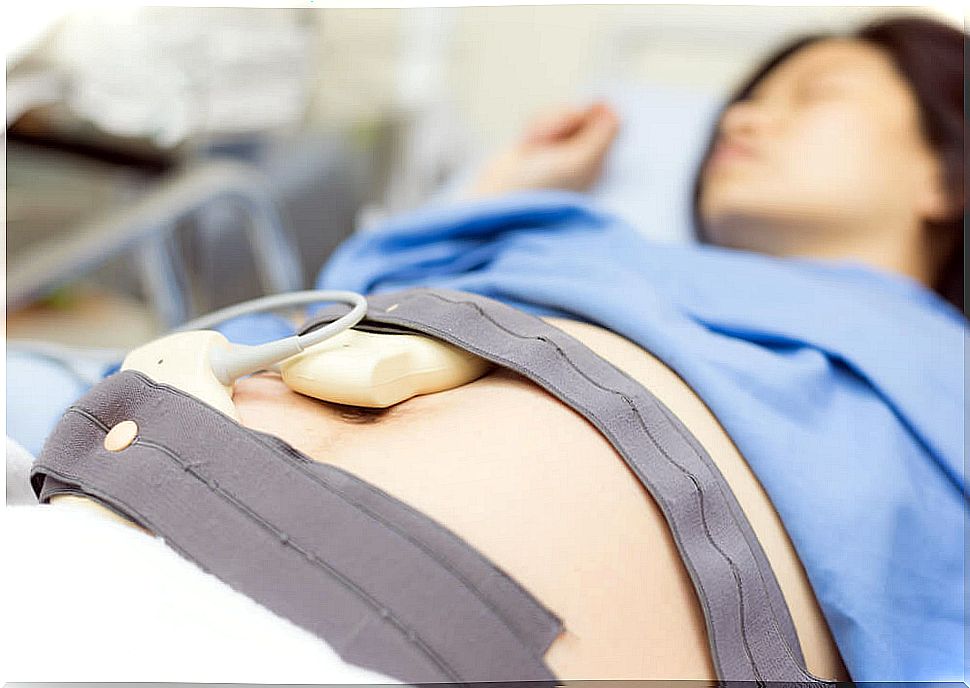The Stages Of Labor

Knowing the stages of labor is important for the expectant mother, as it allows her to normalize the process and reduce the level of anxiety. It must be taken into account that, often, ignorance and uncertainty make a woman predisposed and have a negative experience.
To help mothers to better understand the experience they are going to live before receiving their baby, and to visualize it in a natural way, below we will present the stages of labor one by one.
What are the stages of labor?
Each of the stages of labor has a series of specific characteristics. Together, they constitute the process by which the baby leaves the mother’s womb.
1. Prepartum
Also known as prodomic, it is the period prior to labor and does not have a definite onset. It appears progressively with various symptoms or signs, which will allow the woman to know that the time of delivery is approaching.
But be careful, since labor can start up to two weeks before birth and not all women perceive it. The clear signs that it is in the antepartum phase are the contractions, which are increasing in frequency and intensity, the expulsion of the mucous plug and greater discomfort or pain in the pelvis.

2. Dilation
It is the first of the stages of labor itself, and its objective is to expand or dilate the cervix. It begins when uterine contractions are frequent (between 3 and 15 minutes) and their duration is longer (between 30 seconds and two minutes).
The period of dilation is variable according to each woman. A new mother is more likely to have to go through this situation for 18 hours than a mother who has already gone through several deliveries.
The dilation is divided, in turn, into phases: latent, active and decelerating, and ends when there is a complete dilation (10 centimeters-) or effacement of the cervix. It is usual that between full dilation and delivery there is a latency period without contractions.
In the event that dilation does not occur, doctors can induce it through medications or manual procedures.
3. Birth
Also called the expulsion process, it is the second of the stages of labor. It begins when the baby passes through the birth canal (from the uterus to the outside) and ends when the child is born.
Within the stage of birth or expulsion we can find two phases : the early non-expulsive phase, where the baby has not yet descended and there are no pushing; and advanced expulsion, when the child reaches the pelvic floor and the mother’s reaction is to push.
4. Delivery, the last stage of labor
It is the last of the stages of labor and it happens once the child has already been born. It occurs when the placenta, umbilical cord, and membranes are delivered. This can take a maximum of half an hour.
The placenta is known to have completely detached and expelled once the umbilical cord descends through the vulva. The natural movement of the cord is known as Ahifeld’s sign.

In 95% of cases, placental abruption occurs in the center of the utero-placental junction (a mechanism known as Baudelocque-Schultze). Less frequently, the placenta tears from the sides (Baudelocque-Duncan mechanism).
Some doctors include a process later in the stages of labor, called the ‘immediate puerperium’ in which the baby and the mother must be together to promote the breastfeeding and the safety of the child. This phase begins immediately after delivery and ends two hours later.
Knowledge brings peace of mind
It is important for every mother to be well informed about the stages of labor, as well as other related topics, and resolve any doubts with her doctor. Do not skimp when it comes to this, as a concern can cause great stress and prevent a positive experience from being lived. The information will help you to be more calm and confident in your own body.










